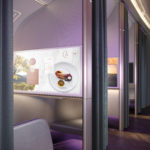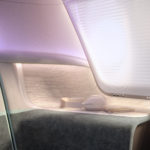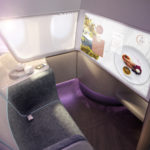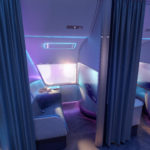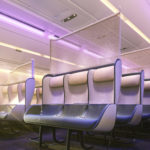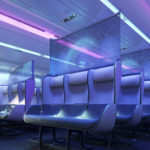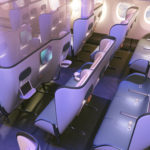[PHOTOS] Gesture Control, Thermochromic Ink & More in PriestmanGoode’s Latest Cabin Concept
Share
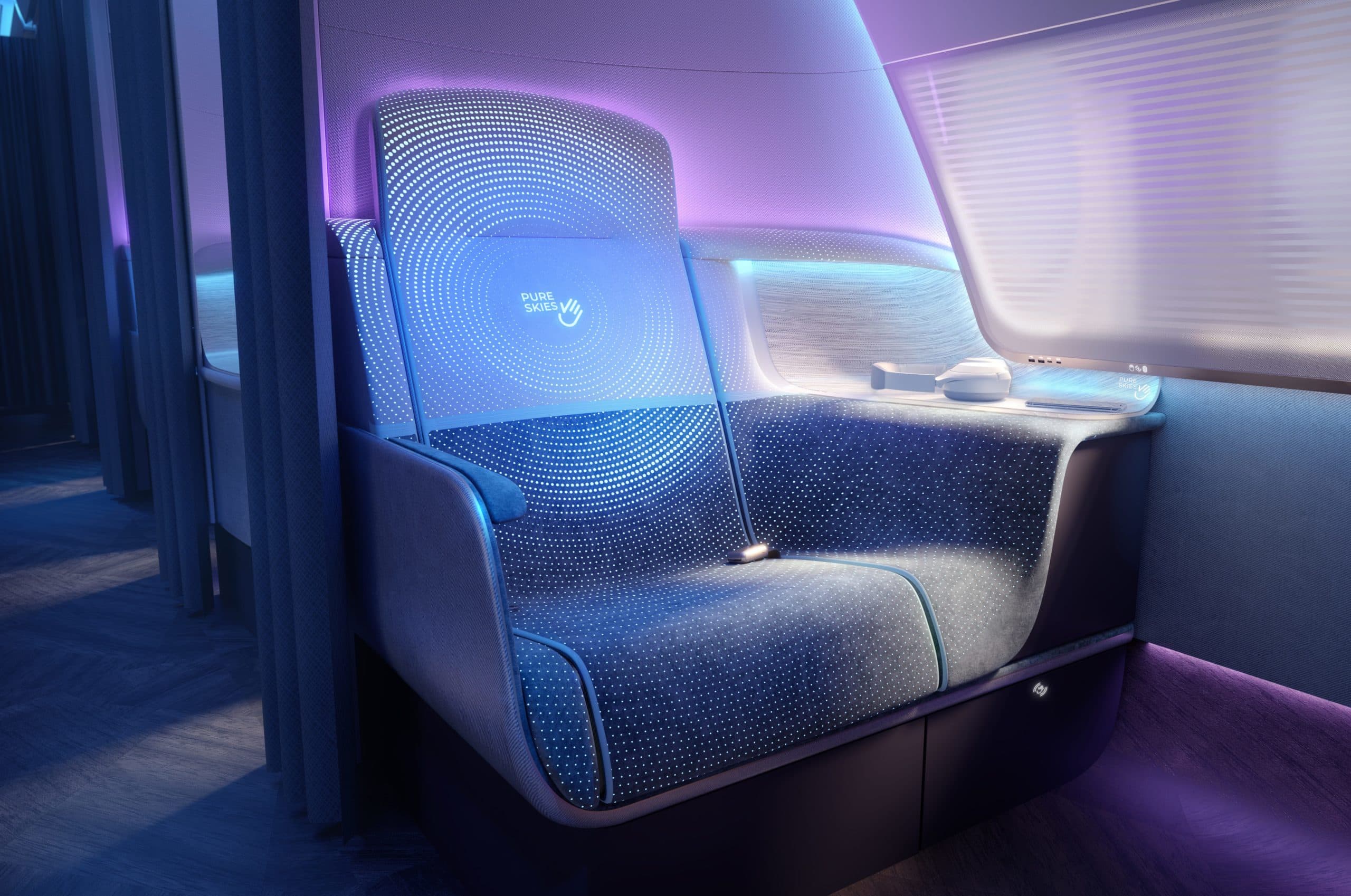
Can a combination of touch-free tech, color innovation and hygiene safeguards spell long-term success for airlines? A new concept by PriestmanGoode bets yes.
PriestmanGoode today unveiled a new cabin concept, called Pure Skies, that it believes can help bolster the longevity of the aviation industry with an array of design touches that will appeal to travelers and airline CFOs alike. “We have not only taken on board present anxieties but also tried to ensure our solutions are future-proofed against future pandemics, recognizing the significant commitment and investment involved,” says Nigel Goode, co-founding director at the London-based design studio.
Central to the concept is hygiene, which Maria Kafel-Bentkowska, the studio’s head of Color, Material and Finish (CMF), says was taken “to a whole new level by leveraging the latest developments in CMF and completely rethinking the seat cover construction.” Seat breaks and split lines are kept to a minimum, remaining seams have been treated with heat welded tape so that the virus can’t hide in the cracks, and photochromic and thermochromic inks that react to cleaning methods, such as UVC and heat, were incorporated. “A message of reassurance can be seen on the fabric surface while boarding but then disappears once the passenger is settled. Turning the invisible visible and creating a graphic interface to communicate a message of reassurance supports the airlines’ brand messages around hygiene and safety,” Kafel-Bentkowska adds.
With Pure Skies, business and economy classes are swapped out for Rooms and Zones, respectively €” an effort to abandon what PriestmanGoode calls the “outdated” notion of class. With the former, passengers can expect a fully enclosed area, partitioned by curtains; a redesigned seat featuring antimicrobial materials and finishes; personal wardrobe and stowage areas, both with integrated UVC cleaning; as well as gesture-controlled IFE synched to the passenger’s own device.
Meanwhile, Pure Skies Zones are equipped with screens dividing every other row; a combination of staggered and non-staggered seating configuration that allows for group seating; clip-on meal trays; an optional removable bag for each passenger or the option to clip-on their own bag instead of the traditional literature pocket; a fold down table with wireless charging and integrated UVC cleaning; and streamlined designs for the seat shells, with an integrated backlit safety card, and recline mechanisms to avoid dirt traps.
Propelled by a desire to help airlines bounce back from the financial losses brought on by the pandemic, PriestmanGoode has embedded revenue opportunities into the design, including two IFE options for economy: a seat without a screen, opening up the opportunity of offering a device for-hire, or staggered seating with additional seat pitch and an added monitor – for a price. “We are using this opportunity to support behavioral shifts such as the increase in bring-your-own devices, which have the benefits of weight saving for the airline and a potential cost saving for the passengers,” Jo Rowan, associate director of Strategy at PriestmanGoode says. “Post-COVID we believe both airlines and passengers will be more receptive to these changes as the benefits become more apparent.”
Lighting and fabrics throughout the cabin were selected with findings from color psychology in mind. During the cleaning process, the cabin is covered in a purple hue, which then transitions into cyan, the color of UV, to evince calmness, and then to peach and yellow “to create a warm and positive onboard environment,” Kafel-Bentkowska explains. Meanwhile, the materials featured on seats and elsewhere in the cabin are predominantly in lighter tones that are meant to reassure passengers of their cleanliness.
Developing and certifying a cabin product can take at least three years, so the design firm is looking ahead to future scenarios while taking into account new passenger behaviors brought on by the global pandemic. “Planning must start today for the solutions to be ready and in place for when volumes undoubtedly return in the industry,” Goode says. “This latest work from the studio represents pragmatic innovation. With the benefit of over 30 years’ experience, we know how to harness design to achieve long-term positive change.”



